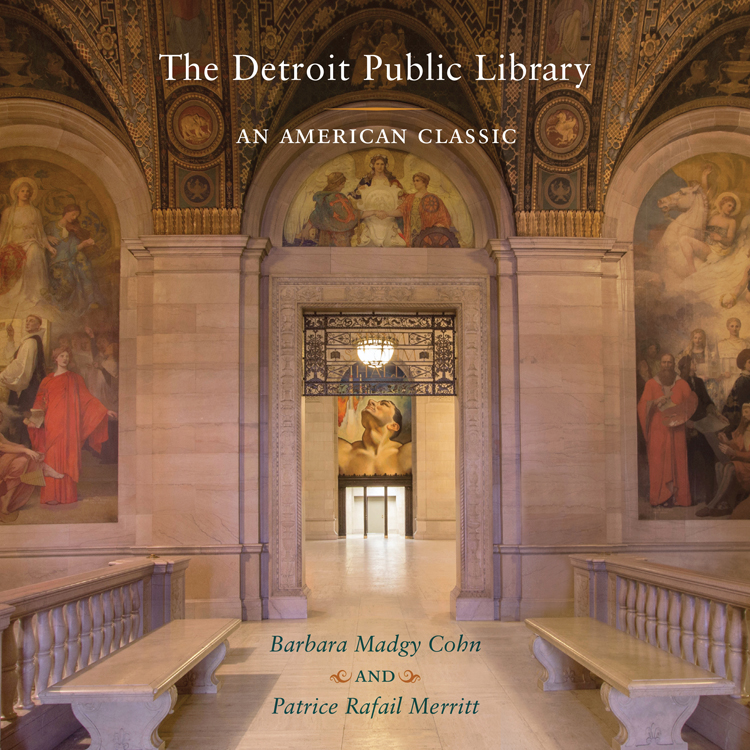City of Dreams?Ь§
 Two books recently published independently of each other have similar themes: photographic takes on Detroit. Both are by internationally recognized photographers not native to the city. And both play off тThe Dream is Nowт theme.
Two books recently published independently of each other have similar themes: photographic takes on Detroit. Both are by internationally recognized photographers not native to the city. And both play off тThe Dream is Nowт theme.
One of the books takes that right to its title: Detroit: TheЬ§Dream IsЬ§Now is by internationally recognized photographerЬ§Michel Arnaud, who has worked for publications such as Vogue and Architectural Digest. Meanwhile, the cover image of Detroit Is No Dry Bones: The Eternal City of the Industrial Age by award-winning ethnographer and photographer Camilo JosУЉ Vergara, shows a тtransitionalт building with the words тThe Dream is Nowт painted on its roof.
Thatтs where the similarities pretty much end.
In Detroit: TheЬ§Dream IsЬ§Now, Arnaud takes a decidedly positive approach. He тaims his lens at the emergent creative enterprises and new developments taking hold in the still-vibrant city.т Thereтs a chapter on Detroitтs greatest hits, including theRenaissance Center, the Fisher Building, Belle Isle, and Comerica Park. Another chapter focuses on the art scene, from The Grand River Creative Corridor and Wasserman Projects to individuals like Lisa Spindler and Desiree Kelly. He showcases the design scene as well, with nods to the John Varvatos store on Woodward Avenue, plus Shinola and Ponyride. Thereтs also a chapter on the food scene that includes the beauty of the restored Grand Army of the Republic building that houses Republic and Parks & Rec and Kuzzoтs Chicken & Waffles, to name just two.

In Detroit Is No Dry Bones, Vergara focuses more on how Detroit has declined and how its residents have survived. Heтs been shooting Detroit for the past 25 years, and you could correctly call some of his work тruin porn.т There are rubble-filled lots, crumbling mansions, abandoned storefronts, and even a series of those тYou Know Who Killed Meт billboards put up by Crime Stoppers. But mixed in with the ruins are some positive takes: the repurposed banks, a reviving stretch of Corktown (featuring Gold Cash Gold), bucolic urban gardens, colorful murals, residents doing what it takes to make their part of the city a bit better.
So which version of Detroit is accurate? Both.Ь§т SteveЬ§Wilke
See You in the Cosmos
 I owe Jack Cheng an apology or two. First, his wonderful book See You in the Cosmos (Dial Books for Young Readers, $17) was tucked away in my тman purseт for about two months before I got around to it. Two: When I finally caught up on my reading list and I read it way too fast! Like someone who fusses over a Thanksgiving dinner for hours only to have the family rip through the meal in minutes, Iтm sure Cheng toiled long and hard to put together this magical book. And then I go and scarf it down in a one-morning marathon. But it was well worth the wait. Cheng was born in Shanghai, but grew up in metro Detroit and recently resettled here after a decade in New York. Yet the setting for his book is the American West, as told through the entries that 11-year-old Alex Petroski has recorded on his iPod. Alex hopes to launch the iPod into space the way his hero, Dr. Carl Sagan, chronicled information about humanity via his Golden Record placed on the Voyager spacecraft in 1977. Alex, an intelligent and enterprising pre-teen, is living with his mom in Colorado. He and his dog (named after Dr. Carl Sagan) begin their quest to make it to a rocket conference in New Mexico. Along the way, Alex gets help from a host of strangers, including Zed, who has taken a vow of silence, and his money scheming friend Steve. Alex loses his dog but finds a stepsister т and the truth about his dead father. Itтs an adventure I plan to read a second time т a bit more slowly this time. Ь§тЬ§Steve Wilke
I owe Jack Cheng an apology or two. First, his wonderful book See You in the Cosmos (Dial Books for Young Readers, $17) was tucked away in my тman purseт for about two months before I got around to it. Two: When I finally caught up on my reading list and I read it way too fast! Like someone who fusses over a Thanksgiving dinner for hours only to have the family rip through the meal in minutes, Iтm sure Cheng toiled long and hard to put together this magical book. And then I go and scarf it down in a one-morning marathon. But it was well worth the wait. Cheng was born in Shanghai, but grew up in metro Detroit and recently resettled here after a decade in New York. Yet the setting for his book is the American West, as told through the entries that 11-year-old Alex Petroski has recorded on his iPod. Alex hopes to launch the iPod into space the way his hero, Dr. Carl Sagan, chronicled information about humanity via his Golden Record placed on the Voyager spacecraft in 1977. Alex, an intelligent and enterprising pre-teen, is living with his mom in Colorado. He and his dog (named after Dr. Carl Sagan) begin their quest to make it to a rocket conference in New Mexico. Along the way, Alex gets help from a host of strangers, including Zed, who has taken a vow of silence, and his money scheming friend Steve. Alex loses his dog but finds a stepsister т and the truth about his dead father. Itтs an adventure I plan to read a second time т a bit more slowly this time. Ь§тЬ§Steve Wilke
The Detroit Public Library: An American Classic
 Poet Gerald E. Raulston wrote: тThrough the journey of life we all must go, we donтt always know where the road will lead.т In the case of DIA docent Barbara Madgy Cohn, crossing Woodward Avenue to the main branch of The Detroit Public Library turned out to be life-changing. тOverwhelmed and in awe of the art and architecture I saw, I asked if it was possible to take a tour but was told they didnтt have tours,т Cohn says. So she and Patrice Rafail Merritt, then the executive director of the Detroit Public Library Friends Foundation, created one. Since the end of 2013, theyтve toured over 7,000 people and have 18 active docents. Now Cohn and Merritt have written a beautiful and fascinating book based on the tour: The Detroit Public Library: An American Classic (Wayne State University Press, $35). All royalties will go to The Detroit Public Library Friends Foundation. Constructed from 1915 to 1921, the original Italian Renaissance-style building was designed by architect Cass Gilbert who also designed New Yorkтs Woolworth Building and the Supreme Court Building in Washington, D.C. A 240,000-square-foot addition designed by Francis Keally and Cass Gilbert Jr. was completed in 1963. Art and architectural highlights include a 1920 Pewabic tile fireplace that depicts fairy tales and childrenтs fables, the mural-adorned barrel-vaulted ceiling of the double Grand Staircase, bas relief bronze door panels depicting Greek and Roman literature, and a 441,000-piece glass mosaic by Millard Sheets. The authors showcase the Main Libraryтs design by over 200 photographs including 50 vintage black and white ones from the Burton Historical Collection, as well as images of the library today as seen through the eyes of Detroitтs modern photographers. The result is a testament to an overlooked treasure. тJudith Harris Solomon
Poet Gerald E. Raulston wrote: тThrough the journey of life we all must go, we donтt always know where the road will lead.т In the case of DIA docent Barbara Madgy Cohn, crossing Woodward Avenue to the main branch of The Detroit Public Library turned out to be life-changing. тOverwhelmed and in awe of the art and architecture I saw, I asked if it was possible to take a tour but was told they didnтt have tours,т Cohn says. So she and Patrice Rafail Merritt, then the executive director of the Detroit Public Library Friends Foundation, created one. Since the end of 2013, theyтve toured over 7,000 people and have 18 active docents. Now Cohn and Merritt have written a beautiful and fascinating book based on the tour: The Detroit Public Library: An American Classic (Wayne State University Press, $35). All royalties will go to The Detroit Public Library Friends Foundation. Constructed from 1915 to 1921, the original Italian Renaissance-style building was designed by architect Cass Gilbert who also designed New Yorkтs Woolworth Building and the Supreme Court Building in Washington, D.C. A 240,000-square-foot addition designed by Francis Keally and Cass Gilbert Jr. was completed in 1963. Art and architectural highlights include a 1920 Pewabic tile fireplace that depicts fairy tales and childrenтs fables, the mural-adorned barrel-vaulted ceiling of the double Grand Staircase, bas relief bronze door panels depicting Greek and Roman literature, and a 441,000-piece glass mosaic by Millard Sheets. The authors showcase the Main Libraryтs design by over 200 photographs including 50 vintage black and white ones from the Burton Historical Collection, as well as images of the library today as seen through the eyes of Detroitтs modern photographers. The result is a testament to an overlooked treasure. тJudith Harris Solomon
|
| Ь§ |
|








